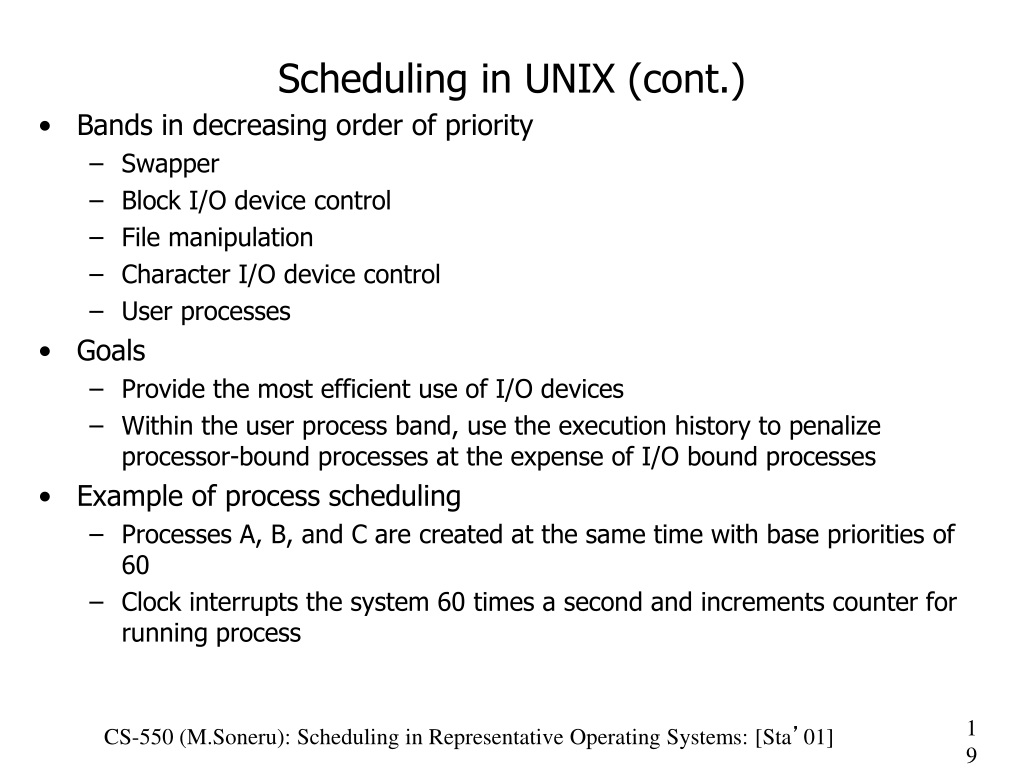

#LAB SCHEDULING ROUND ROBIN WITH A TIMESLICE OF 4 TICKS CODE#
The output of the above code is as follows:Īdvantages of Round Robin Scheduling Algorithm Int x = sizeof processes / sizeof processes įindavgTime(processes, x, burst_time, quantum) Calculate the total waiting time and total turnĬout << " " << i+1 << "\t\t" << bt <<"\t " << " Waiting time " << " Turn around time\n" Display processes along with all details Function to find turn around time for all processesįTurnAroundTime(processes, n, bt, wt, tat) Function to find waiting time of all processesįWaitingTime(processes, n, bt, wt, quantum) Int wt, tat, total_wt = 0, total_tat = 0 Void findavgTime(int processes, int n, int bt, Function to calculate the average time calculating turnaround time by adding bt + wt Void fTurnAroundTime(int processes, int n, Function used to calculate the turn around time As the process gets fully executed thus remaining burst time becomes 0. Waiting time is current time minus time used by this process.

Increase the value of t to show how much time a process has been processed If burst time is smaller than or equal to the quantum then it is Last cycle for this process Decreasing the burst_time of current process by the quantum By Increasing the value of t it shows how much time a process has been processed Let us Make a copy of burst times bt to store remaining burst timesĭone = false // indicates there is a pending process

The Function to find the waiting time for all processes Waiting Time = Turn Around Time – Burst TimeĪverage waiting time is calculated by adding the waiting time of all processes and then dividing them by no.of processes.Īverage waiting time = waiting time of all processes/ no.of processesĪverage waiting time=11+5+15+13/4 = 44/4= 11ms C++ Implementation For RR Scheduling // Program implementation in C++ for Round Robin scheduling Turn Around Time = Completion Time – Arrival Time The value of time quantum in the above example is 5.Let us now calculate the Turn around time and waiting time for the above example : Processes Note: If arrival time is not given for any problem statement then it is taken as 0 for all processes if it is given then the problem can be solved accordingly. In the above diagram, arrival time is not mentioned so it is taken as 0 for all processes. Let us now cover an example for the same: It Indicates the time Difference between turn around time and burst time.Īnd is calculated as Waiting Time = Turn Around Time – Burst Time The Formula to calculate the same is: Turn Around Time = Completion Time – Arrival Time This mainly indicates the time Difference between completion time and arrival time. It is the time at which any process completes its execution. This is a widely used scheduling method in the traditional operating system. This is a hybrid model and is clock-driven in nature. Though it may vary for different operating systems. In this algorithm, the time slice should be the minimum that is assigned to a specific task that needs to be processed. This Algorithm is a real-time algorithm because it responds to the event within a specific time limit. This algorithm is one of the oldest, easiest, and fairest algorithm. Round Robin Scheduling algorithm resides under the category of Preemptive Algorithms. Some important characteristics of the Round Robin(RR) Algorithm are as follows: It is important to note here that the length of time quantum is generally from 10 to 100 milliseconds in length. This algorithm is simple and easy to implement and the most important is thing is this algorithm is starvation-free as all processes get a fair share of CPU. Once a process is executed for the given time period that process is preempted and another process executes for the given time period.Ĭontext switching is used to save states of preempted processes. This algorithm is similar to FCFS scheduling, but in Round Robin(RR) scheduling, preemption is added which enables the system to switch between processes.Ī fixed time is allotted to each process, called a quantum, for execution. Round Robin(RR) scheduling algorithm is mainly designed for time-sharing systems. Longest Remaining Time First Scheduling.


 0 kommentar(er)
0 kommentar(er)
